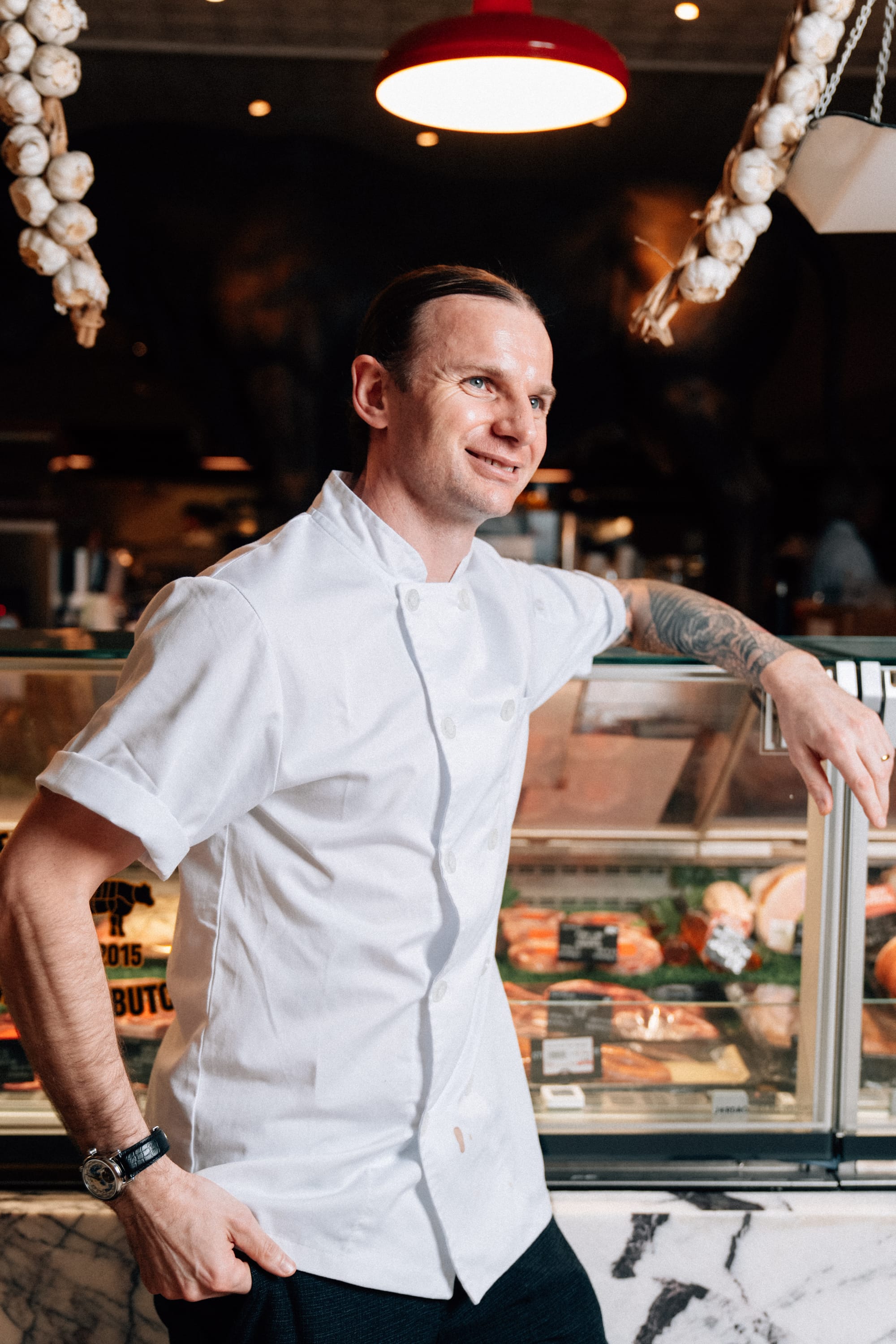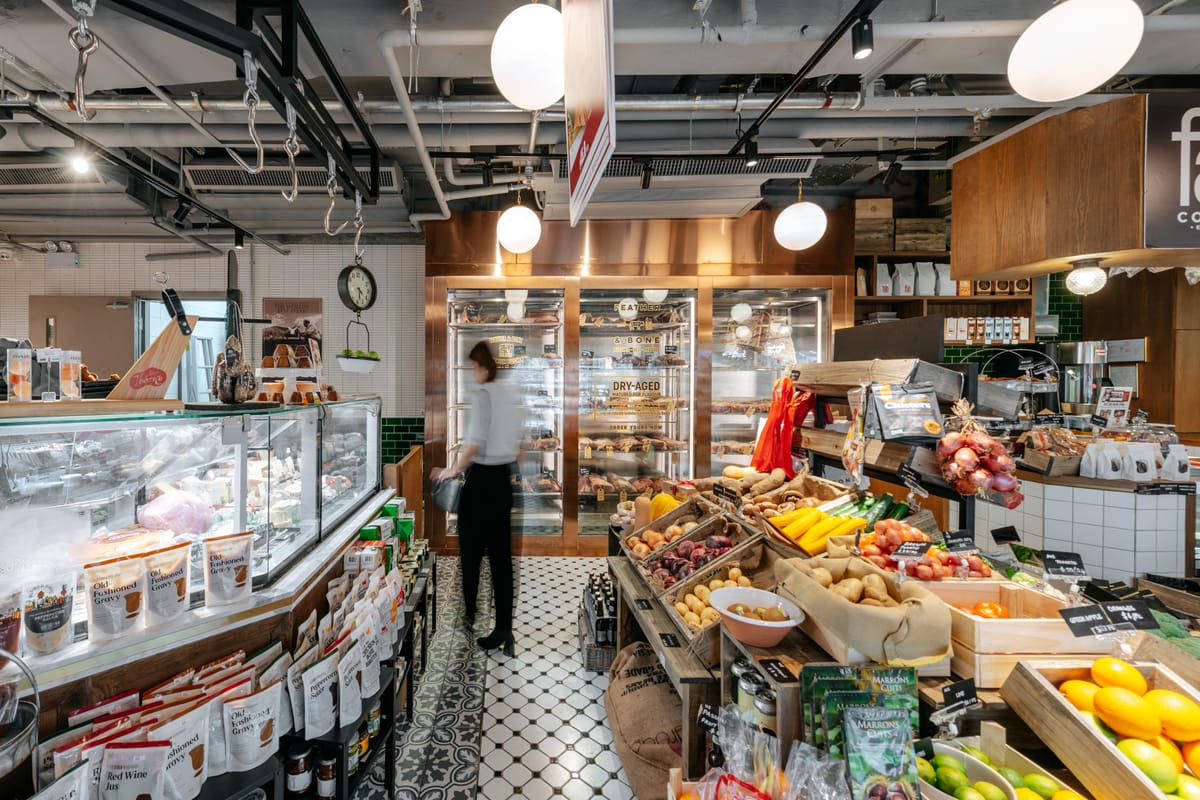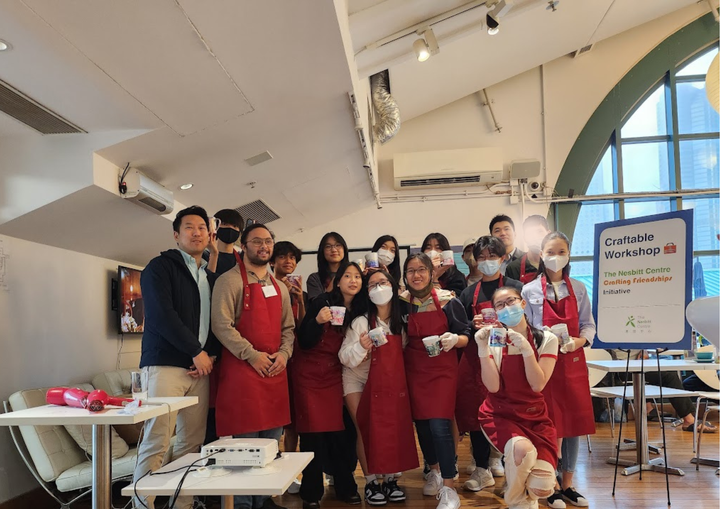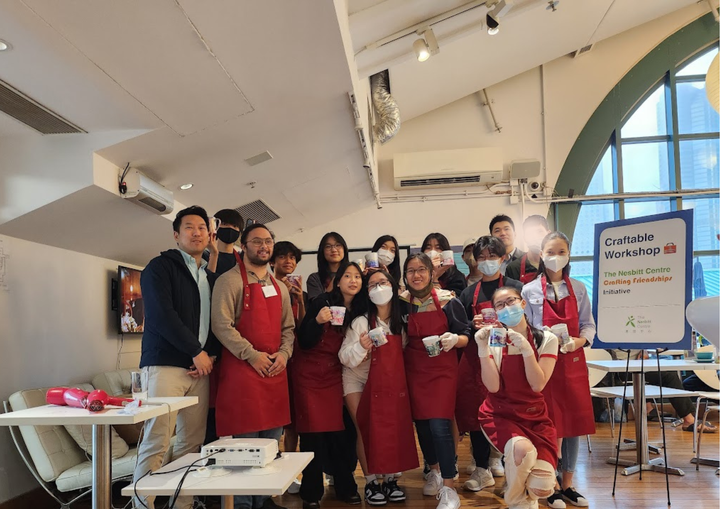Initially established as a sort of mashup of a premium butcher, deli and grocer, Hong Kong’s Feather & Bone spans 10 locations across the city.
Initially established as a sort of mashup of a premium butcher, deli and grocer, Hong Kong’s Feather & Bone spans 10 locations across the city. From letting guests select a cut from the butcher’s counter and preparing it to order to offering a seasonal menu with dishes like Shepherd’s Pie to roasted grass-fed bone marrow and truffled porcini risotto – Feather & Bone is all about a deli-to-table experience that is “tasty and unpretentious.”
If you peek into the open kitchen, you might spot Group Executive Chef James Oakley, calm and collected with his hair meticulously combed back into a ponytail.
Oakley has dedicated his entire career to the culinary arts. His passion for food was ignited at the age of 14 during a part-time job, and he’s never looked back. Over the past two years, Oakley has taken on the role of overseeing each Feather & Bone restaurant, visiting them once or twice a week. However, rather than seeing himself as a traditional senior management type, Oakley views his role more as a “therapist” for his team, providing guidance and support.
TMS sat down with Oakley, who shared his culinary journey and how his food philosophy is a perfect match for the Feather & Bone concept.
From Grandma’s helper to ambitious chef
Hailing from England, cooking is the only job Oakley has ever had. “Yeah, I've not done a day of work outside of the industry,” he says. “So if something should happen to me and I can't cook, I'm screwed.”
Oakley’s passion for cooking began early, rooted in his inherent curiosity about food. “I've always been fascinated by the magic of cooking,” he shares. “Taking ingredients in their raw form and transforming them into something completely different.”
This lifelong passion was nurtured by the quality time Oakley spent with his family. Growing up in the UK, he had fun adventuring out to pick wild food and cooking it with the family. Whether it was blackberries from hedgerows or wild garlic, “It was like a family event, back when I was a kid,” he explains.
His grandmother, coming from a generation where everything was homemade from raw ingredients, played a big role in his early years learning about food and cooking. She encouraged him to mix ingredients and experiment, even though it involved little actual cooking at first.
As he got older, his skills started to develop more, and she’d allow Oakley to do a bit more in the kitchen. But it wasn't until he was 14 that he got his first taste of the professional culinary world and clicked with it immediately.
“Prior to that, I hadn't really even thought about a career, to be honest with you,” he says, “So I started working part-time in restaurants, and the atmosphere, the environment, the camaraderie within the kitchen, I really enjoyed it from day one … So I decided pretty much there and then that this is what I'm going to do.”
A smile flashes across Oakley’s face as he recalls those days. “I used to get into trouble while I was at school because I'd cut days of school to go and work in a restaurant,” he says. “My high school called my mother to school to try and convince me that I shouldn't be pursuing a career as a chef. But I was adamant. I was like, ‘No way, I'm going to work.’”
With a goal to become the best chef he could be, Oakley naturally wanted to work for the best in the business. At the age of 16, he left school and started working in Gordon Ramsay’s Michelin-starred restaurant at Claridge’s in London. After spending a year and a half there, he moved to Essex to work under another Michelin-starred chef, Jeremy Medley.
“That was probably the best decision I made for my career at that time,” he says. “Although [Medley] doesn't necessarily have the same sort of name as Gordon Ramsay, he works in a smaller kitchen, and you just get to see and do so much more than what you would do in Gordon Ramsay’s.”
At 26, Oakley took on his first head chef role at Llys Meddyg in Pembrokeshire, Wales. In 2013, he got the opportunity to move to Hong Kong as the executive chef of Aqua Tokyo. After working in the city for over a year, he traveled again to cook in places like Thailand and Europe before returning to Hong Kong around eight years ago.

Finding his place at Feather & Bone
Since returning to Hong Kong, Oakley spent six and a half years as the executive chef at the Cordis Hotel before joining Feather & Bone in 2022. When asked about his responsibilities as the executive chef, Oakley laughs and says, “I do everything. Done, that was easy.”
In his role, he oversees seven restaurants, plans menus and trains the teams, deeply involving himself in every aspect of operations and management. He also sees a big part of his role as being a “therapist” for his team.
“I think that’s probably the most important thing for my role is being there for the team and making sure they are well supported,” he says, “and creating an environment within which they can deliver to our expectations.”
You can see this collaborative energy in the day-to-day operations at Feather & Bone. For example, Oakley shares that new menu item promotions are a team effort. “We get together, and we would discuss, and it's really cool in the company because we all bounce ideas off one another, and we also support one another,” he says.
“Then it's over to me to execute those ideas, introduce them to the team, train the team and make sure that individual outlet chefs have the support that they need.”
Supporting each team member is how Oakley ensures the food is consistently good in all of Feather & Bone’s restaurants. “In my position, I need to ensure that they have the right environment within which to deliver to our expectations, but they also need to be able to trust the people that we've hired,” he explains.
Oakley tries to visit each venue at least once or twice a week. “We have a really good team of head chefs and head butchers in place who will monitor the quality on a day-to-day basis,” he says. High-quality sourcing is key to Feather & Bone’s methods, too. Oakley says they directly source from farms, with much of their produce coming from Australia.
Sustainability also plays a big role in Feather & Bone’s culinary concept. Oakley has introduced measures like zero single-use plastic, biodegradable materials for takeout and no plastic bags to make things more sustainable.
From the start, Oakley felt like he really clicked with the working culture at Feather & Bone. “I immediately felt good energy within the company,” he recalls.
“I worked for six and a half years for Cordis Hotel. I loved my time there; it was great, but I never truly felt as though I could be myself,” he says.
Now, at Feather & Bone, Oakley says he feels a sense of freedom and authenticity. “Owner, senior management, line staff, it doesn't matter,” he says. “I just feel totally relaxed. I can be myself, laugh, joke. Everybody has the same goal and intention within the company … to do the best they can on a daily basis and enjoy yourself as you're doing it. A happy workforce is a good workforce, and you can really feel that positivity and energy throughout the company.”
A humble, personal touch
Having worked in several Michelin-starred restaurants and big hospitality groups, Oakley has experienced the different dynamics of both high-end fine dining and more intimate team settings like Feather & Bone.
“I would say, early in my career, working in Michelin stars was essential to me to develop my skills and learn to cook at the very highest level,” Oakley reflects. “When I was younger, obtaining a Michelin star was far more difficult than it seems to be today.”
But, his perspective on Michelin stars has evolved. He doesn’t think getting a Michelin star is as important as he once did, saying it’s more of a guide rather than a necessary marker of success.
“Back in the day when I was working in fine dining, Michelin-starred restaurants, the structure was excellent,” he explains. “You had large teams, work was quite well segregated, each section had their own specific responsibilities, all contributing to the bigger picture.”
While Oakley does acknowledge the benefits of this kind of structured environment, he also recognizes there are some drawbacks. “So many different hands touch one item,” he notes, which can dilute the personal touch.
“I think with Michelin-starred restaurants and certainly fine dining back then, the food is very meticulous. It's very exciting in technique, flavor profiles are quite exciting,” he says. “But seldom would I have a Michelin star meal and feel like it was delicious and comforting.”
At Feather & Bone today, Oakley has moved away from the classical, technique-focused Michelin style. “I would prefer to eat something that is delicious and wholesome, and I think that probably reflects in my cooking today,” he says.
Oakley sees this trend growing in the culinary industry as a whole, too. “I think even we see it in the fine dining world as well,” he adds. “Michelin star chefs are increasingly opening more humble, more approachable eateries.”
This philosophy is deeply embedded in the Feather & Bone dining experience. Oakley explains that the style of their cuisine is approachable, humble and honest. He and his team focus on high-quality ingredients and classic comfort food that people are familiar with.
“You know it's the kind of food that you would eat [and] it can almost spark memories,” Oakley says. “If you can create that, if the food jogs somebody's memory and makes it reminiscent of good times in the past, then it's an amazing experience if you're able to deliver that.”





Comments ()